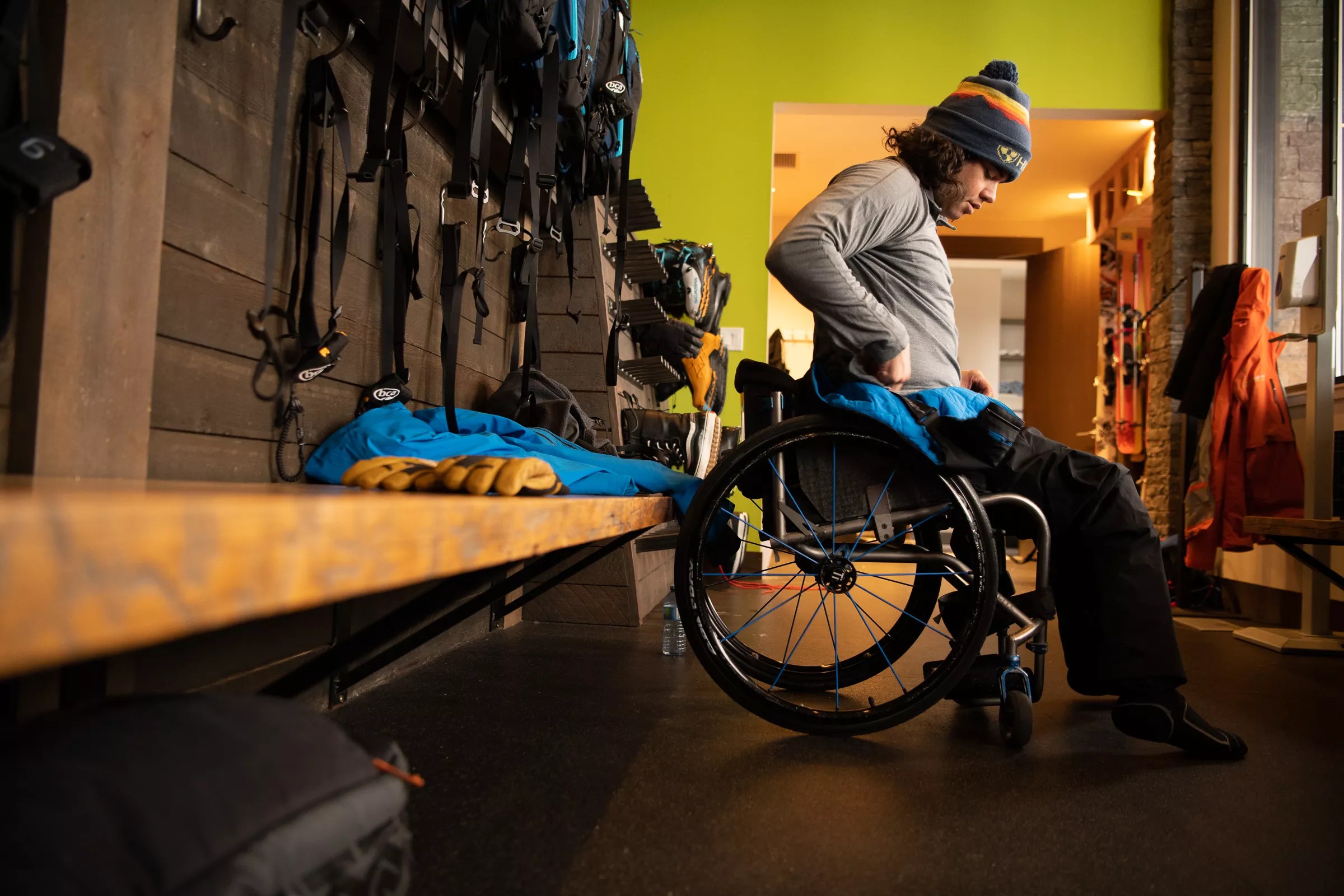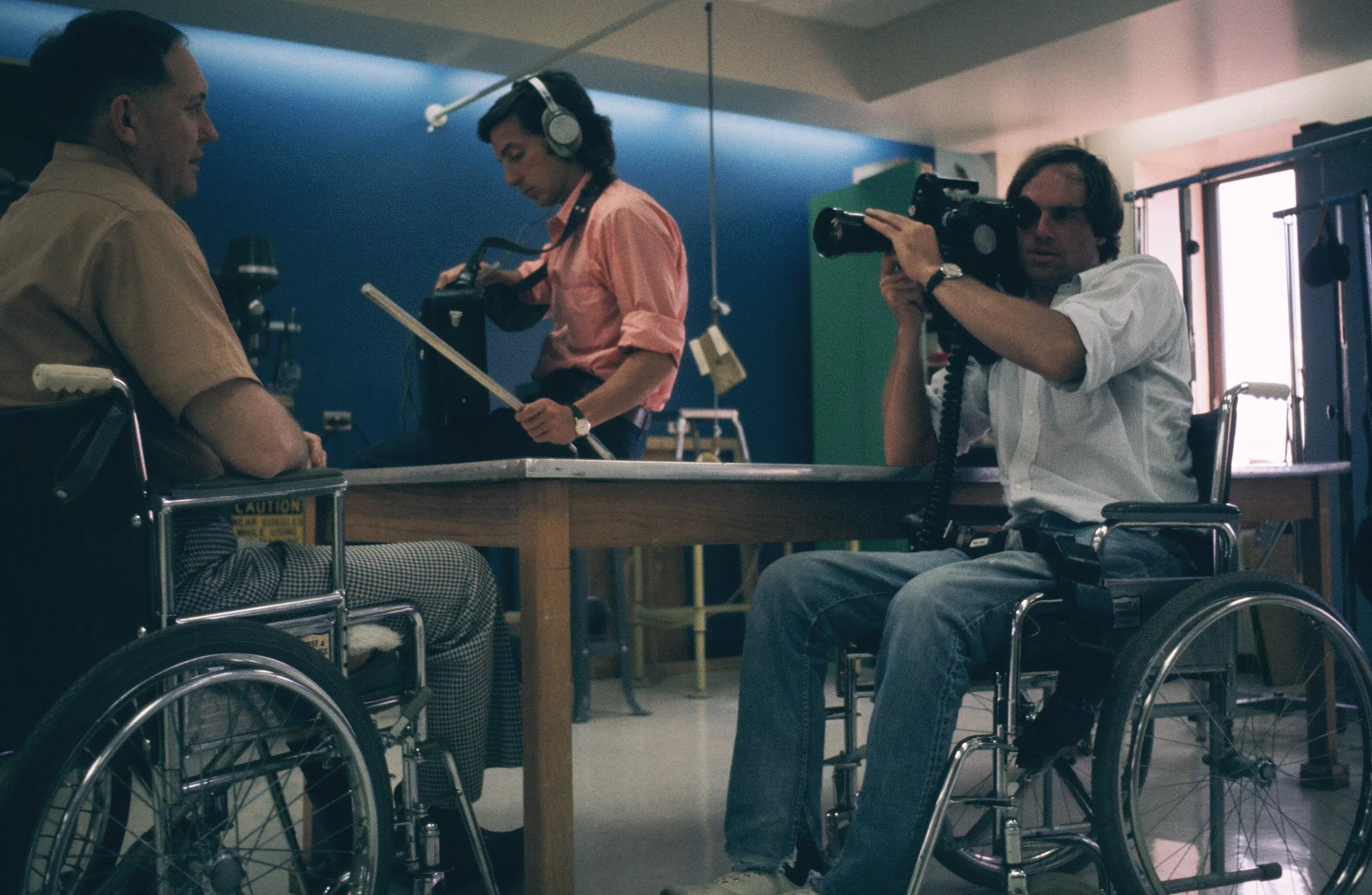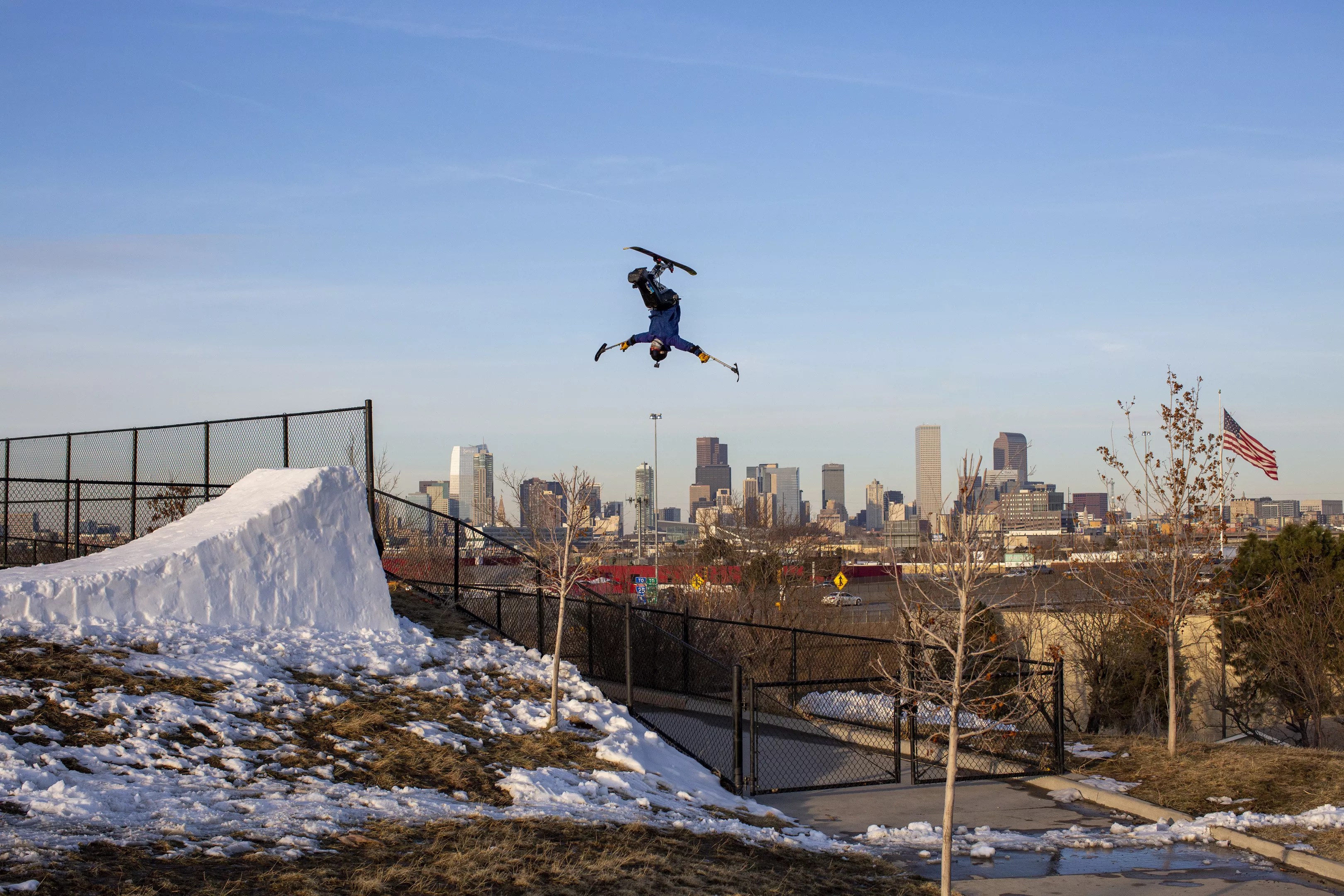
Full Circle

Audio By Carbonatix
“I’ve always wanted to lead by example,” says Trevor Kennison, a professional adaptive skier based in Winter Park. He quickly rose to fame in 2019 after airing into Corbet’s Couloir, a legendary 45-degree pitch at Jackson Hole Mountain Resort named after legendary ski instructor and mountain guide Barry Corbet. Like Corbet, Kennison learned how to live and thrive with spinal cord injuries (SCI), and the experiences of both athletes are highlighted in the documentary Full Circle, now showing in select theaters and coming to Netflix on January 19.
A lifelong athlete, Kennison was born and raised in Keene, New Hampshire, where his parents owned a snowboard shop. He learned to ride at a young age but took a long hiatus from snowboarding, favoring soccer, volleyball and Junior Olympic swimming. Kennison experienced several sports-related injuries while young, however, and was first prescribed painkillers during his freshman year of high school. He developed a serious addiction that affected his everyday abilities and lasted for six years.
Ultimately, he overcame his dependence on pills, became a skilled plumber and moved to Colorado. He arrived in Avon on November 9, 2013, and quickly got back into snowboarding, spending around 65 days on the slopes that first season while working a full-time job.
Almost exactly a year later, on November 15, 2014, Kennison suffered a paralyzing snowboarding accident at Vail Pass while attempting a forty-foot jump – something that, to him, was neither new nor extreme. He shattered his T11 and T12 vertebrae, punctured his spinal cord and dislocated his back ninety degrees into his stomach. Right away, he knew he was paralyzed.
Will you step up to support Westword this year?
At Westword, we’re small and scrappy — and we make the most of every dollar from our supporters. Right now, we’re $21,000 away from reaching our December 31 goal of $50,000. If you’ve ever learned something new, stayed informed, or felt more connected because of Westword, now’s the time to give back.
“I was two years clean when I broke my back, and I just remember laying on the snow on Vail Pass thinking, ‘Oh, shit, I have to get back on pain pills,'” recalls Kennison. It took over three hours for the search-and-rescue team to reach him through a blizzard, and as he waited, he thought about his family, his then-girlfriend, his career, and even the possibility that he might not survive. Life in a wheelchair didn’t cross his mind.

Kennison excelled in rehab at Craig Hospital but faced many physical and emotional challenges.
Full Circle
At Craig Hospital in Englewood, Kennison excelled in rehab. But despite his physical achievements and generally positive attitude, adjusting to his new version of life wasn’t easy. Corbet had gone through similar challenges after surviving a helicopter crash near Aspen in 1968 that left him paralyzed from the waist down; he, too, received treatment at Craig.
Full Circle features an interview with Craig psychologist Dr. Lester Butt. “There are people that come into the facility that truly feel their lives are over,” he notes in the film. Fortunately, both Corbet and Kennison refused to let their passion for life be limited by their injuries – either physically or mentally.
In his book Options: Spinal Cord Injury and the Future, published in 1980, Corbet reminded SCI survivors, “You have not been deprived of choice.” Before his accident, Corbet was a member of the first U.S. team to summit Mount Everest, made first ascents up Antarctica’s two highest peaks, and established several new routes in the Teton Range, among other mountaineering accomplishments. He was also a filmmaker who produced several titles, including Ski the Outer Limits.
Following his injury, Corbet went through periods of solitude and depression, but he found fulfillment when he returned to the outdoors. He continued to push physical boundaries and became a skilled kayaker, a sport few paraplegics dared try in 1976. He continued making adventure films along with Changes, a documentary about wheelchair users. His advocacy for the disabled community was amplified when, in 1991, he became the editor of New Mobility, a magazine that covers the lives and achievements of people with SCI.
Josh Berman, who directed Full Circle, saw the similarities in Corbet’s and Kennison’s experiences. “It really turned the whole concept of the project upside down and opened the story to a new perspective,” he says. “I ultimately feel like we made a better film combining their stories.”

After making adventure films, Barry Corbet pivoted his camera to SCI survivors.
Full Circle
Corbet passed away in 2004, but he remains an inspiration, especially to adaptive athletes like Kennison, who’s benefited from the road map Corbet created. Kennison has also been supported by other community leaders including Roy Tuscany, who founded the High Fives Foundation after suffering a spinal cord injury at Mammoth Mountain Ski Area in 2006.
“High Fives helps people that suffer life-altering injuries doing action mountain sports, and they help them to return to sport and live a life again,” explains Kennison, who is High Fives athlete number 110. Since its inception in 2009, the nonprofit organization has provided grants, physical rehabilitation, mental health resources and adaptive sports camps, among other programming, to 716 athletes.
“I can tell you almost every single one’s story,” says Tuscany. “We don’t term individuals that we serve as an awardee, recipient or grantee. We use the term ‘athlete,’ and the term athlete has an identity. When an individual sustains a life-changing injury, [the] identity that once was [theirs] is now gone. If you can give an individual this identity instantaneously, they start to see themselves in a more positive light.”
As Full Circle points out, Kennison isn’t just an adaptive athlete – he’s an athlete in the greatest sense. He’s an Eddie Bauer Community Leader, sponsored by GoPro, Ikon Pass and other entities; according to Outside magazine, he’s one of the most influential people in the outdoor industry. The documentary highlights several of his professional triumphs: winning the riders’ choice award at the invite-only Kings and Queens of Corbet’s, launching off the X Games’ big-air jump and finding redemption at Vail Pass, where he completed a double backflip on a sit-ski six years after his injury.
The film also covers other areas where Kennison has had to adapt, from navigating relationships and completing basic biological functions to simply accepting his new, different reality. “You see my physical wheelchair, but everything is so internal,” he notes. “It’s so mental, this whole battle, you know?”

In the documentary, Kennison is seen backdropped by the Denver skyline.
Full Circle
He says that following the accident, “it took me six months to get clean off of [painkillers]. I remember I had 150 pain pills. I took two, and I was like, ‘This is not me. I can’t be doing this.’ I threw them all out and quit cold turkey.”
Since then, he’s been prescribed pain medication for a urinary tract infection and torn shoulder, but he’s had his girlfriend manage the medication to ensure that he takes the proper dosage. Full Circle “touches on it,” he says,” but we don’t talk too much about it, and I think it’s very important – like, pill addiction is scary. Definitely talk to your loved ones and seek help if you’re in trouble.”
Kennison believes that the documentary will have an impact on a lot of people, and after all his hard work, he’s basking in the moment. “I want to have a family,” he says. “I want to have a house one day. I’ll always ski, but there’s more out there, and who knows what’s next? I have no clue where life’s gonna take me, but I’m ready for it.”